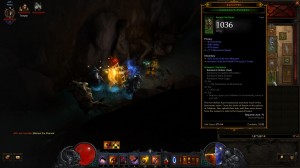Before we get to the final part of my look at replayability in video games, there is one element we need to discuss first. Whenever a game must create something new for the player to experience, it all comes down to procedural or random generation and both elements are essential to understand about replayability.
Randomized Content:
This part is going to be quick, as we have talked about it at length in the past. Whenever a game has to generate anything — Biomes, Items, Enemies, and so on, there are two broad categories. Randomly generated refers to a game pulling from preset, or already generated, elements and placing them in the game space. The use of loot-boxes and gacha design are another big example of randomized content; as the game is simply picking from choices and not making anything new.
The major differentiation between randomized and procedural content is that randomized content has already been set. The game is technically not creating anything new or original, but simply pulling from a hard list of defined choices. When you want the game to actually make something, that’s when procedural comes into play.
Procedural Content:
Procedural content is when the game will generate content either during the running of a game, or at the initial load. Be it new loot drops, game spaces, or enemy types, there are a lot of options here.
All procedural generated content is about setting an algorithm, or set of instructions for the game engine to follow, when creating something during the play. This is where the concept of “loot tables” that we talked about in an earlier part came from.
It’s important to understand that procedural generation still relies on fixed elements defined and created by the designer for the game to use when creating something new. With all that said, it’s time to ask a not so simple question.
What’s Better?
While it may be easy to separate the two forms of design, it’s not really a case of which one is better, but how to apply them in a game.
Having a large enough pool of random content can be just as effective as procedurally generating it. Not only that, but many of the best and most replayable games will use a combination of both. With the Binding of Isaac, the items generated randomly came from a fixed pool of items, and the levels were procedurally generated from a set of fixed rooms. Figuring out what content will add the most bang for your buck can keep improving a game’s replayability.
With both XCOM Enemy Within and XCOM 2 War of the Chosen, a lot of the new content added was supplemental; increasing the choices that could show up without directly adding to the game length. For games built on being replayed over multiple playthroughs, being able to make each one feel different is crucial. Understanding what aspects keep people coming back and extending those is a big part of improving replayability in your game.
With procedural generation, typically once you have defined algorithm, you’re not going to add a new one. Just like with random generation, the best way to improve is to add more elements for the game to draw from when building its content. New item modifiers, enemy types, environmental details, and more, are just a few of the examples.
Time for the Finale:
Like I said, this entry is on the short side, as we’re going to pull it all together for the final piece. Up next, we’re going to talk about what everything we’ve discussed means for replayability, and what you need to think about in terms of design.



